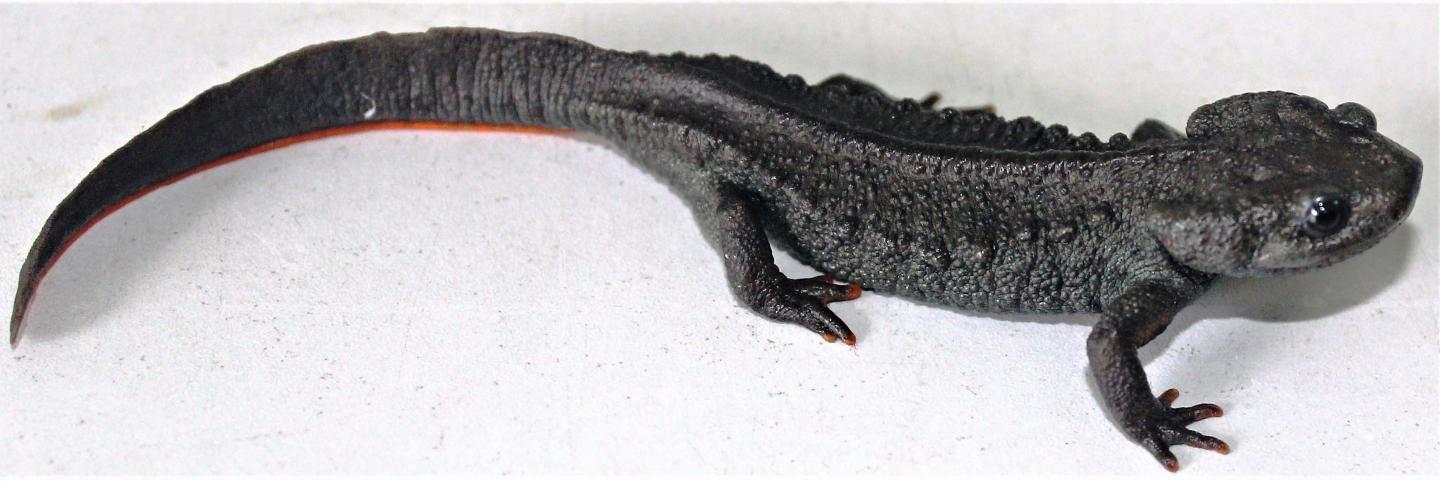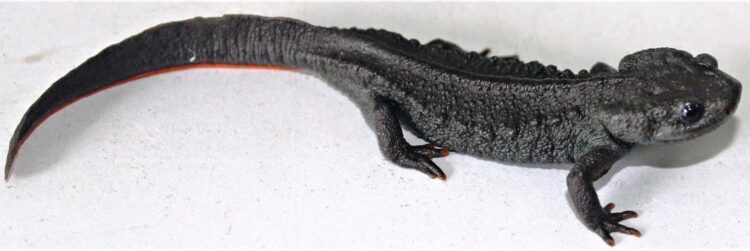
Credit: Cuong The Pham
In time for the International Day for Biological Diversity 2020, the date (22 May) set by the United Nations to recognise biodiversity as “the pillars upon which we build civilizations”, a new study, published in the peer-reviewed open-access journal ZooKeys, describes two new to science species and one subspecies of crocodile newts from northern Vietnam. However, this manifestation of the incredible diversity of life hosted on our planet comes as an essential reminder of how fragile Earth’s biodiversity really is.
Until recently, the Black knobby newt (Tylototriton asperrimus) was known to be a common species inhabiting a large area stretching all the way from central and southern China to Vietnam. Much like most of the other members of the genus Tylototriton, colloquially referred to as crocodile newts or knobby newts, it has been increasingly popular amongst exotic pet owners and traditional Chinese medicine practitioners. Meanwhile, authorities would not show much concern about the long-term survival of the Black knobby newt, exactly because it was found at so many diverse localities. In fact, it is still regarded as Near Threatened, according to the International Union for Conservation of Nature’s Red List.
However, over the past decade, the increasing amount of research conducted in the region revealed that there are, in fact, many previously unknown to science species, most of which would have been assumed to be yet another population of Black knobby newts. As a result, today, the crocodile newts represent the most species-rich genus within the whole family of salamanders and newts (Salamandridae).
Even though this might sound like great news for Earth’s biodiversity, unfortunately, it also means that each of those newly discovered species has a much narrower distributional range, making them particularly vulnerable to habitat loss and overcollection. In fact, the actual Black knobby newt turns out to only exist within a small area in China. Coupled with the high demand of crocodile newts for the traditional Chinese medicine markets and the exotic pet trade, this knowledge spells a worrying threat of extinction for the charming 12 to 15-centimetre amphibians.
In order to help with the answer of the question of exactly how many Vietnamese species are still being mistakenly called Black knobby newt, the German-Vietnamese research team of the Cologne Zoo (Germany), the universities of Hanoi (Vietnam), Cologne and Bonn (Germany), and the Vietnam Academy of Science and Technology analysed a combination of molecular and detailed morphological characters from specimens collected from northern Vietnam. Then, they compared them with the Black knobby newt specimen from China used to originally describe the species back in 1930.
Thus, the scientists identified two species (Tylototriton pasmansi and Tylototriton sparreboomi) and one subspecies (Tylototriton pasmansi obsti) previously unknown to science, bringing the total of crocodile newt taxa known from Vietnam to seven. According to the team, their discovery also confirms northern Vietnam to be one of the regions with the highest diversity of crocodile newts.
“The taxonomic separation of a single widespread species into multiple small-ranged taxa (…) has important implications for the conservation status of the original species,” comment the researchers.
The newly discovered crocodile newts were named in honour of the specialist on salamander chytrid fungi and co-discoverer Prof. Dr. Frank Pasmans and, sadly, the recently deceased salamander enthusiasts and experts Prof. Fritz-Jurgen Obst and Prof. Dr. Max Sparreboom.
In light of their findings, the authors conclude that the current and “outdated” Near Threatened status of the Black knobby newt needs to be reassessed to reflect the continuous emergence of new species in recent years, as well as the “severe threats from international trade and habitat loss, which have taken place over the last decade.”
Meanwhile, thanks to the commitment to biodiversity conservation of Marta Bernardes, lead author of the study and a PhD Candidate at the University of Cologne under the supervision of senior author Prof Dr Thomas Ziegler, all crocodile newts were included in the list of internationally protected species by the Convention on International Trade in Endangered Species (CITES) last year.
Today, some of the threatened crocodile newt species from Vietnam are already kept at the Cologne Zoo as part of conservation breeding projects. Such is the case for the Ziegler’s crocodile newt (Tylototriton ziegleri), currently listed as Vulnerable on the IUCN Red List and the Vietnamese crocodile newt (Tylototriton vietnamensis), currently considered as Endangered. Fortunately, the latter has been successfully bred at Cologne Zoo and an offspring from Cologne was recently repatriated.
###
Original source:
Bernardes M, Le MD, Nguyen TQ, Pham CT, Pham AV, Nguyen TT, Rödder D, Bonkowski M, Ziegler T (2020) Integrative taxonomy reveals three new taxa within the Tylototriton asperrimus complex (Caudata, Salamandridae) from Vietnam. ZooKeys 935: 121-164. https:/
Media Contact
Prof Dr Thomas Ziegler, Cologne Zoo & University of Cologn
[email protected]
Related Journal Article
http://dx.





